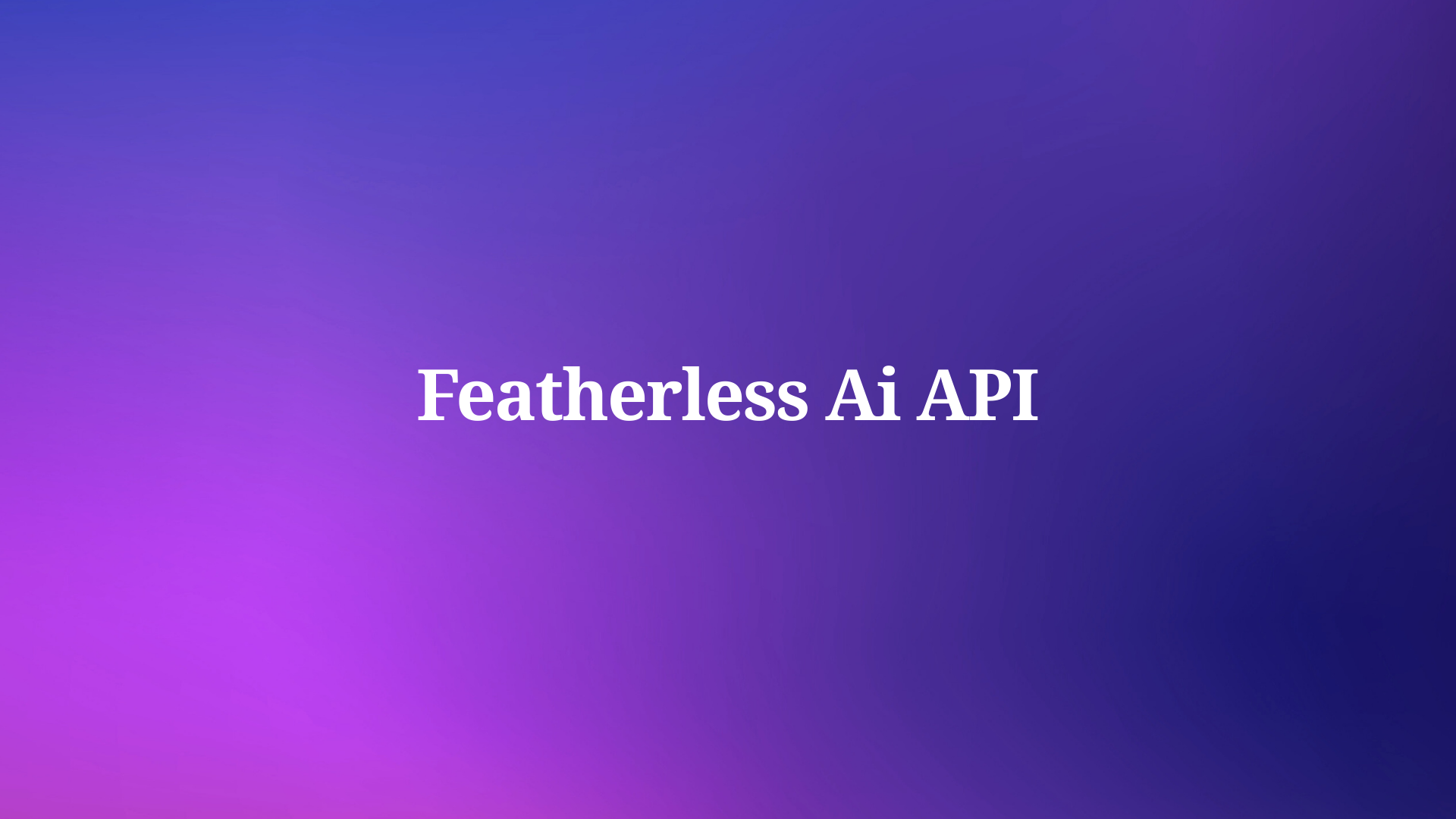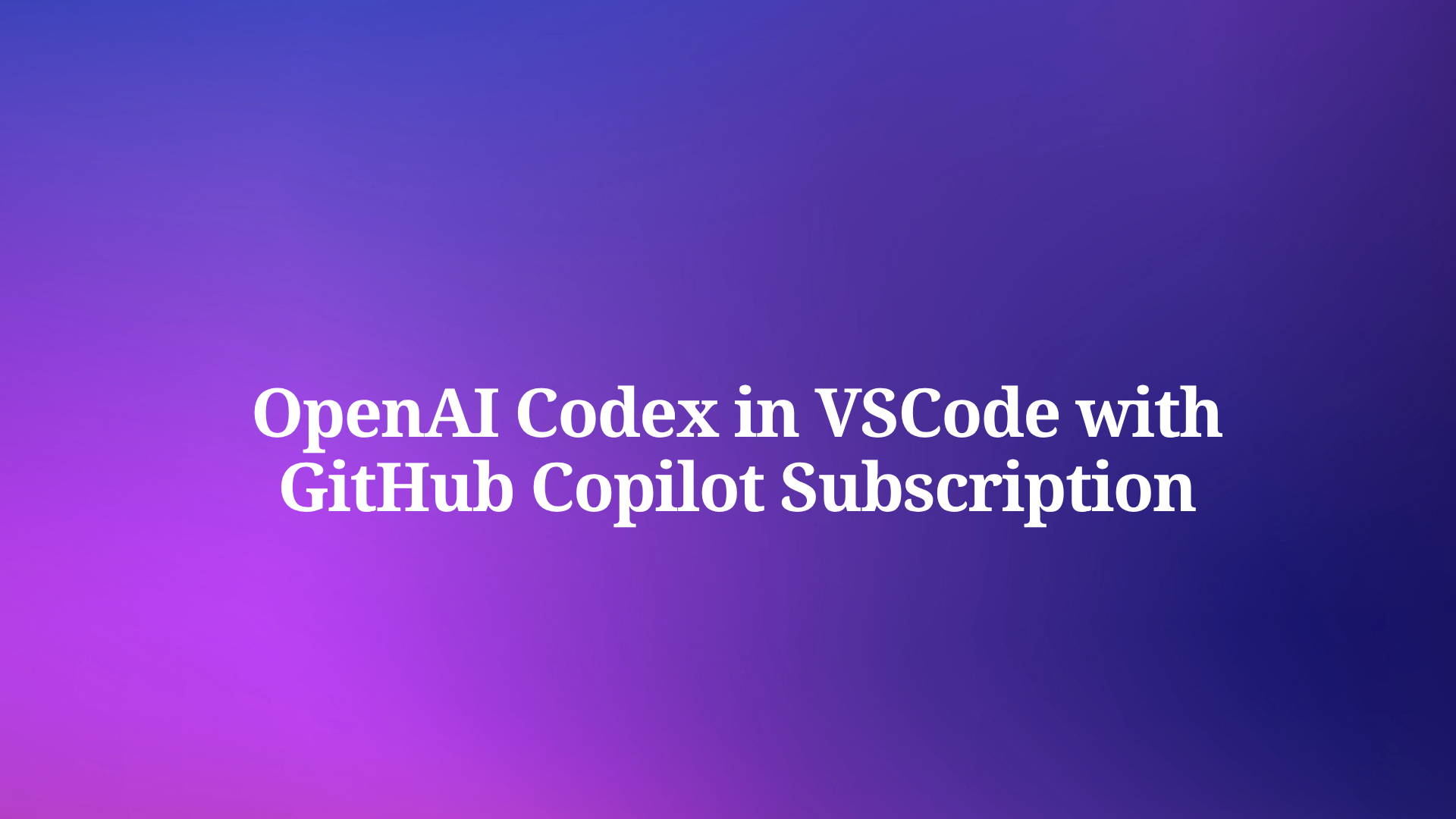Developers increasingly rely on efficient platforms to deploy and run AI models without managing complex infrastructure. Featherless AI emerges as a powerful solution in this landscape, offering serverless inference for a vast array of open-source models. This platform simplifies access to advanced AI capabilities, enabling users to focus on innovation rather than server maintenance. As you explore Featherless AI, understanding its API becomes essential for integration into applications.
Featherless AI stands out by providing access to thousands of models from repositories like Hugging Face, all through an OpenAI-compatible interface. This compatibility allows developers to leverage existing tools and libraries with minimal adjustments. Moreover, the platform's emphasis on scalability and cost-efficiency appeals to both individual creators and enterprise teams. In the following sections, we examine the platform's foundations, features, and practical implementation steps.
Understanding Featherless AI: A Serverless Inference Platform
Featherless AI operates as a serverless AI inference platform, designed to host and execute large language models (LLMs) and other AI models without requiring users to provision hardware. Engineers and data scientists benefit from this approach because it eliminates the overhead of GPU management and scaling. Instead, Featherless AI handles model loading, orchestration, and execution dynamically, responding to demand in real time.

The platform's core mission focuses on democratizing access to AI models. It integrates deeply with the Hugging Face ecosystem, where developers host millions of open-source models. Featherless AI pulls these models into its serverless environment, making them available via API calls. This setup ensures that even niche or experimental models become instantly deployable. For instance, a developer working on natural language processing tasks can invoke a specialized model without downloading gigabytes of data or configuring a local server.
Furthermore, Featherless AI prioritizes performance optimization. It employs advanced GPU orchestration to allocate resources efficiently, minimizing latency during inference. Users report response times that rival dedicated hardware setups, yet without the associated costs. This efficiency stems from the platform's ability to cache models and predict usage patterns, ensuring smooth operation even under variable loads.
In addition to its technical prowess, Featherless AI addresses key concerns like privacy and logging. The platform allows users to control data retention and audit trails, which proves crucial for compliance in regulated industries. Consequently, organizations handling sensitive information find Featherless AI a reliable choice. As we proceed, these elements highlight why the platform gains traction among AI practitioners.
Key Features of Featherless AI
Featherless AI packs a suite of features that cater to diverse AI workloads. At the forefront, its serverless architecture enables automatic scaling. When traffic spikes, the platform provisions additional resources transparently, preventing bottlenecks. Developers appreciate this because it supports unpredictable application demands, such as chatbots during peak hours.
Another standout feature involves model compatibility. Featherless AI supports thousands of models from Hugging Face, spanning LLMs, vision models, and multimodal variants. Users select models by their Hugging Face identifiers, and the platform loads them on demand. This breadth empowers experimentation; for example, switching from a text generation model to an image captioning one requires only a parameter change in the API request.
GPU orchestration represents a technical highlight. Featherless AI optimizes GPU utilization across multiple models, using techniques like model sharding and quantization to fit larger models into limited memory. This process reduces inference costs while maintaining accuracy. Moreover, the platform incorporates tool calling capabilities, allowing models to interact with external functions seamlessly. Developers integrate custom tools for tasks like database queries or web searches directly into AI responses.
Vision support extends the platform's versatility. Users process images alongside text prompts, enabling applications in computer vision. The realtime API beta further enhances interactivity, supporting streaming responses for low-latency experiences like live conversations. Privacy features ensure that input data remains ephemeral unless specified otherwise, with optional logging for debugging.
Concurrency limits and plans provide fine-grained control. Free tiers offer basic access, while paid options unlock higher throughput. These features collectively position Featherless AI as a comprehensive tool for AI deployment. In the next section, we explore how these components interconnect in the platform's architecture.
How Featherless AI Works: Technical Architecture
Featherless AI's architecture revolves around a distributed, serverless backend that abstracts infrastructure complexities. At its heart, a model registry indexes available Hugging Face models, caching frequently used ones to accelerate loading times. When a user submits an API request, the system first checks the registry for the specified model. If present, it routes the inference to an optimized GPU cluster; otherwise, it fetches and prepares the model dynamically.
This preparation phase employs sophisticated loading mechanisms. Featherless AI uses techniques like lazy loading and pre-warming to minimize cold starts. For large models exceeding single-GPU capacity, the platform applies tensor parallelism, distributing computations across multiple devices. Quantization options, such as 4-bit or 8-bit precision, further optimize memory usage without significant accuracy loss. Developers configure these via API parameters, tailoring performance to their needs.
Orchestration occurs through a central scheduler that monitors resource utilization. It employs algorithms to balance loads, preventing any single model from monopolizing GPUs. This scheduler also handles failover, ensuring high availability. For realtime interactions, WebSocket-like streaming maintains persistent connections, chunking responses to reduce perceived latency.
Security layers protect the ecosystem. API keys authenticate requests, with rate limiting to enforce concurrency caps. Data in transit uses HTTPS, and the platform avoids persistent storage of user inputs by default. Integration with Hugging Face tokens simplifies authentication for community models. Overall, this architecture delivers robust, scalable inference. Consequently, developers build reliable AI applications with confidence.
Accessing the Featherless AI API: Step-by-Step Guide
Developers access the Featherless AI API through a simple, OpenAI-compatible interface. This design choice facilitates adoption, as existing OpenAI SDKs work with minimal modifications. Start by creating an account on the Featherless AI website. Registration involves providing an email and verifying it, granting immediate access to the dashboard.

Next, generate an API key from the account settings. Navigate to the API keys section, click "Create New Key," and copy the generated token securely.

This key authenticates all subsequent requests. Featherless AI recommends storing it in environment variables to avoid hardcoding in applications.

With the key in hand, construct your first API call. The base endpoint is https://api.featherless.ai/v1. For chat completions, use the /chat/completions path, mirroring OpenAI's structure. Here's a Python example using the OpenAI SDK:
from openai import OpenAI
client = OpenAI(
api_key="your_featherless_api_key",
base_url="https://api.featherless.ai/v1"
)
response = client.chat.completions.create(
model="featherless_ai/meta-llama/Meta-Llama-3-8B-Instruct",
messages=[{"role": "user", "content": "Explain serverless AI."}]
)
print(response.choices[0].message.content)
This code initializes the client with the Featherless base URL and API key. It then sends a message to a Llama 3 model, retrieving the generated response. Run this script to verify connectivity; successful execution confirms API access.
For other languages, adapt accordingly. In JavaScript, use the openai npm package similarly:
const OpenAI = require('openai');
const openai = new OpenAI({
apiKey: 'your_featherless_api_key',
baseURL: 'https://api.featherless.ai/v1',
});
async function main() {
const completion = await openai.chat.completions.create({
messages: [{ role: 'user', content: 'Explain serverless AI.' }],
model: 'featherless_ai/meta-llama/Meta-Llama-3-8B-Instruct',
});
console.log(completion.choices[0].message.content);
}
main();
These examples demonstrate the API's ease of use. Parameters like temperature, max_tokens, and top_p control generation behavior, just as in OpenAI. Model names follow the prefix featherless_ai/<huggingface-model-id>, ensuring precise selection.
Troubleshooting common issues enhances reliability. If requests fail with 401 errors, verify the API key. Rate limits trigger 429 responses; upgrade plans to increase quotas. Network timeouts often resolve by retrying with exponential backoff. Documentation provides detailed error codes for deeper diagnostics.
In addition, explore advanced endpoints. The /models route lists available models, aiding discovery. Vision tasks use the same chat endpoint with image URLs in messages. Tool calling involves defining functions in the request body, where the model decides invocation.
This setup empowers developers to integrate Featherless AI rapidly. To optimize testing, tools like Apidog prove invaluable, as detailed next.
Integrating Apidog with the Featherless AI API
Apidog enhances the development workflow for APIs like Featherless AI's. As a comprehensive API platform, Apidog supports design, debugging, and collaboration, streamlining interactions with serverless endpoints. Download Apidog for free to import the Featherless AI OpenAPI specification and begin testing immediately.

Start by creating a new project in Apidog.

Import the OpenAI schema, adjusting the base URL to https://api.featherless.ai/v1. Add your API key as a header authorization bearer token. This configuration allows sending requests visually, without writing code.

For instance, set up a chat completion request. In the request builder, select POST to /chat/completions. Body as JSON includes model, messages, and optional parameters. Hit send to receive responses, with Apidog highlighting syntax and validating payloads. Environment variables manage multiple API keys, facilitating switches between test and production.
Apidog's mocking feature simulates Featherless AI responses during offline development. Generate mock data based on schemas, ensuring application robustness. Documentation auto-generates from requests, sharing endpoints with teams. Mock servers simulate latency, testing resilience.

Furthermore, Apidog integrates with version control, tracking API evolutions. For Featherless AI, monitor model updates by re-testing endpoints. Collaboration tools enable shared collections, accelerating team projects. Security scanning detects vulnerabilities in requests, vital for production APIs.
Using Apidog with Featherless AI reduces debugging time significantly. Developers iterate faster, focusing on logic rather than boilerplate. This integration exemplifies how specialized tools amplify platform capabilities.
Advanced Topics in Featherless AI API Usage
Beyond basics, Featherless AI supports sophisticated features for complex applications. Tool calling enables models to execute functions dynamically. Define tools in the API request, such as a calculator or API fetcher. The model generates tool calls in responses, which your application executes and feeds back.
For example, in a Python integration:
tools = [
{
"type": "function",
"function": {
"name": "get_weather",
"description": "Get current weather",
"parameters": {
"type": "object",
"properties": {"location": {"type": "string"}},
}
}
}
]
response = client.chat.completions.create(
model="featherless_ai/...",
messages=[{"role": "user", "content": "What's the weather in New York?"}],
tools=tools
)
# Handle tool calls here
This setup allows AI-driven automation, expanding use cases.
Vision capabilities process images via base64-encoded data or URLs. Include them in messages for multimodal inference, useful in e-commerce or diagnostics. The platform handles various formats, outputting descriptive text.
Realtime API beta supports streaming, ideal for interactive UIs. Use server-sent events to receive partial responses, enhancing user experience in web apps. Implement with SDKs that support streaming iterators.
Concurrency management optimizes throughput. Monitor usage via dashboard metrics, adjusting requests to stay within limits. Batching multiple prompts reduces overhead for bulk processing.
These advanced elements unlock Featherless AI's full potential. Developers leverage them for innovative solutions, from autonomous agents to real-time analytics.
Real-World Use Cases for Featherless AI
Featherless AI finds applications across industries. In content generation, writers use it to draft articles or code snippets, integrating via API for automated workflows. E-commerce platforms employ vision models for product tagging, processing uploads efficiently.
Chatbot development benefits from low-latency inference. Companies build customer support bots, scaling seamlessly during surges. Research labs experiment with niche models, accelerating prototyping without hardware investments.
Integration with frameworks like LangChain or LlamaIndex simplifies RAG pipelines. Featherless AI serves as the inference backend, combining retrieval with generation. In gaming, realtime API powers NPC dialogues, creating immersive experiences.
Healthcare applications analyze medical texts or images, adhering to privacy standards. Finance sectors generate reports from data queries using tool calling. These cases demonstrate versatility, driving adoption.
Moreover, open-source communities contribute models, enriching the ecosystem. Developers access cutting-edge research instantly, fostering collaboration.
Pricing and Plans for Featherless AI
Featherless AI offers tiered plans to match usage. The free tier provides limited requests, ideal for testing. Pro plans unlock higher concurrency and priority queuing, priced per token or request volume.

Enterprise options include custom SLAs and dedicated resources. Costs scale with model size and complexity; smaller models incur lower fees. The dashboard tracks billing, preventing surprises.
Compared to self-hosting, Featherless AI saves on upfront hardware. Pay-as-you-go aligns with variable needs, optimizing budgets. Evaluate plans based on projected throughput for best value.
Best Practices and Limitations
Adopt best practices to maximize Featherless AI efficiency. Select appropriate models to balance speed and quality. Implement caching for repeated prompts, reducing API calls. Monitor latency metrics, optimizing prompts for brevity.
Limitations include dependency on Hugging Face availability and potential cold starts for rare models. Mitigate by pre-warming popular endpoints. Ensure prompts avoid biases, aligning with ethical AI use.
Security best practices involve rotating API keys regularly and validating inputs. For production, use webhooks for async processing.
Conclusion
Featherless AI revolutionizes serverless AI inference, providing accessible, scalable model deployment. By following the outlined steps, developers integrate its API effortlessly, enhanced by tools like Apidog. As AI evolves, platforms like this empower innovation. Start experimenting today to harness its capabilities in your projects.



